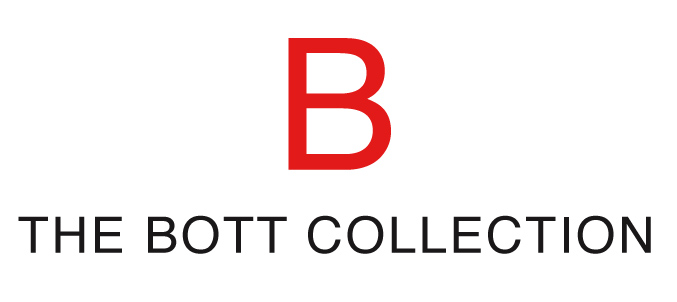In 1999, Pam Paulson and I invited Ross Bleckner to make prints with us at our tiny studio in Emeryville, California. He arrived early in the morning, briefcase in hand, ready to go. We had prepared for the project by purchasing an airbrush, a tool that Ross had been using to make his large-scale molecular paintings. He explained that he made his paintings by coating his canvas with a thin oil-paint wash. While the wash was still wet, he used the airbrush to blow away a tiny dot of the wash, creating small areas of unpainted canvas that were ringed with wash. The results were paintings reminiscent of molecular structures or images found under the microscope.
Ross Bleckner and Renee Bott in 1999
After explaining the basic principles of aquatint, and discussing the current method Ross was using to create his paintings, he asked a simple question that led to the completion of eight of nine aquatints: “Is there any way to blow away the dark?” he asked.
Aquatint is a method of creating a flat, even area of tone in an etching. We used rosin dust to do aquatints at the press, although some etchers use spray-paint or Xerox toner to make their aquatints. Rosin is hardened pine-sap. It is ground into a fine dust; put in a large, enclosed box; and activated with a fan so that the dust becomes airborne. Next, the copper plate is inserted into the dust storm, and the rosin settles on the surface in a random dot pattern on the plate.
ROSS BLECKNER; Arrangement, 1999 Color Aquatint Etching, 40” x 31”
The plate is removed from the aquatint dust box and heated to melt the dust specks into tiny drops of golden rosin that are stuck to the plate. Once the plate is inserted in the acid, the acid bites around each dot of rosin-resist and creates a random dot pattern that is etched into the plate. The resulting etch resembles sandpaper or a rough surface that holds tiny pockets of ink in place: when printed, the aquatint appears as a solid area of tone.
For Ross, we dusted a plate with an even layer of rosin power and then carefully placed the plate on his work table. He experimented with using the airbrush to blow away the powder to create an image in the dust. Once he finished manipulating the dust, we melted the powder to the plate, etched it, and then washed it off to print.
Ross Bleckner uses the airbrush to manipulate an unmelted aquatint, 1999
Where the rosin powder had been blown away, we were able to polish the plate, creating a smooth surface that didn’t hold ink. The resulting images are of soft lines blending from dark to light with a hazy edge, closely emulating a series of watercolors Ross did in the 1980s in which he painted with bleach to create lines of hazy light in an otherwise dark field.
For his prints, Ross punctuated the soft airbrush lines with areas of dark, laid in by hand with aquatint spit-bite, a method of painting acid right on the plate. The results were stunning.
Ross Bleckner: Pathway L, 2002 Aquatint 37.5” x 35”
Ross worked with us again in 2002 and used the airbrush method then too, creating two stunning images: Pathway L and Pathways. These two prints conjure the night sky; they are stunning and celestial. We were blown away by Bleckner’s stars.





